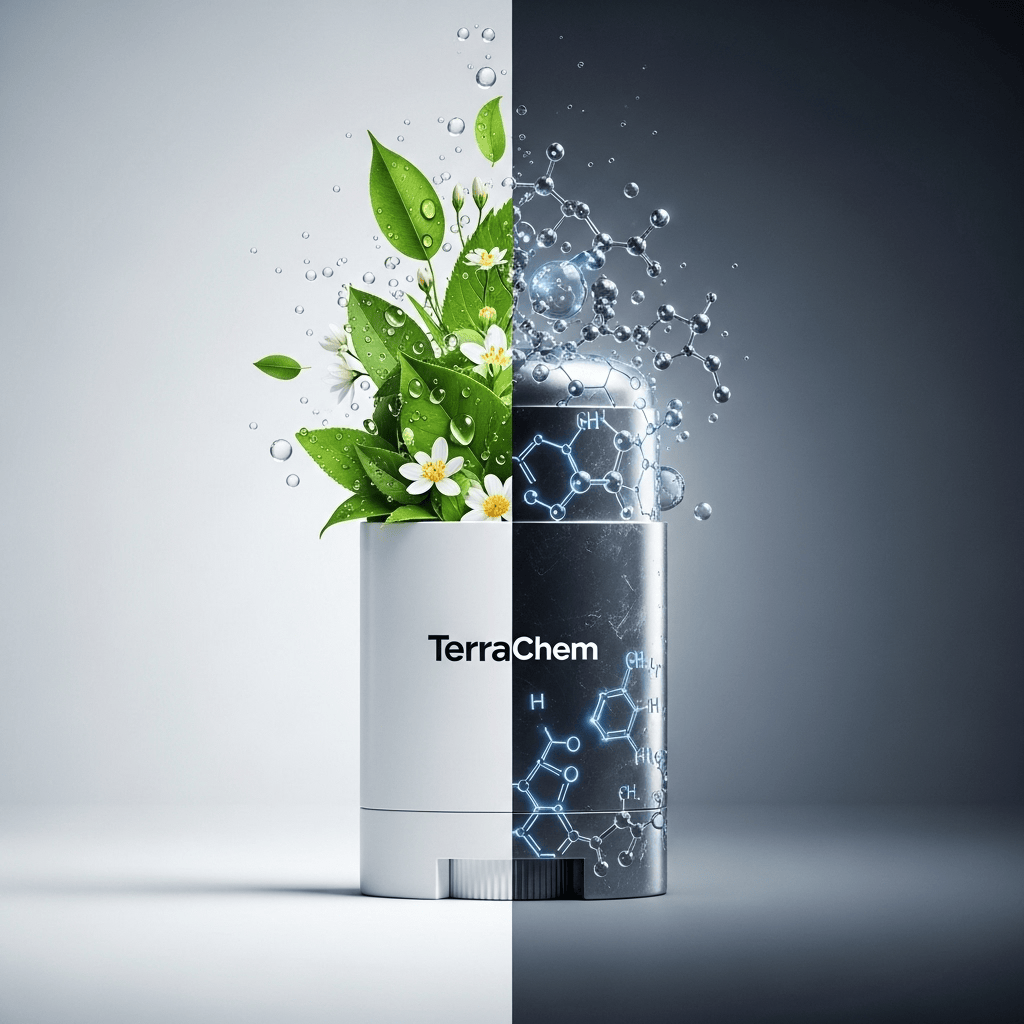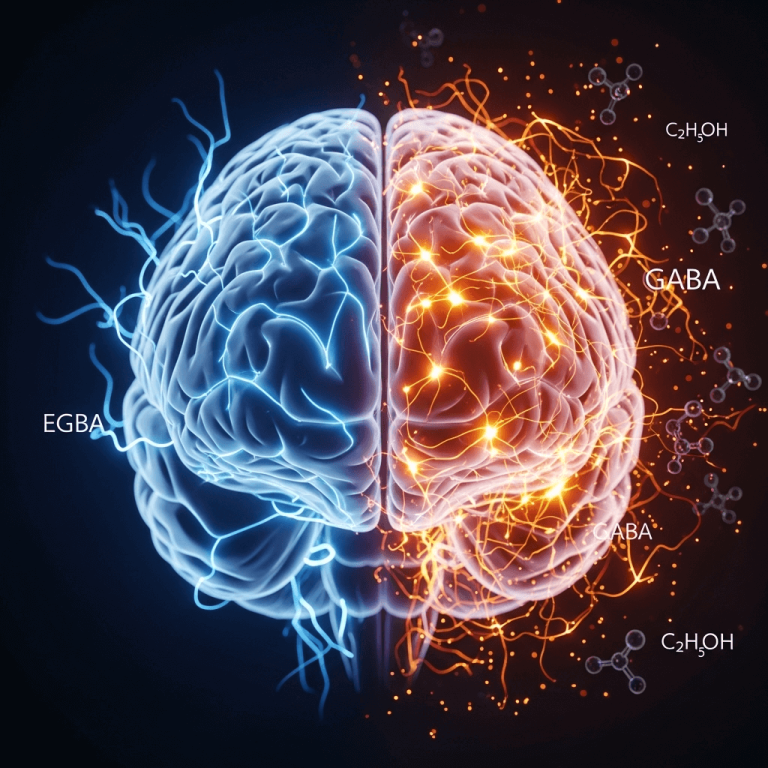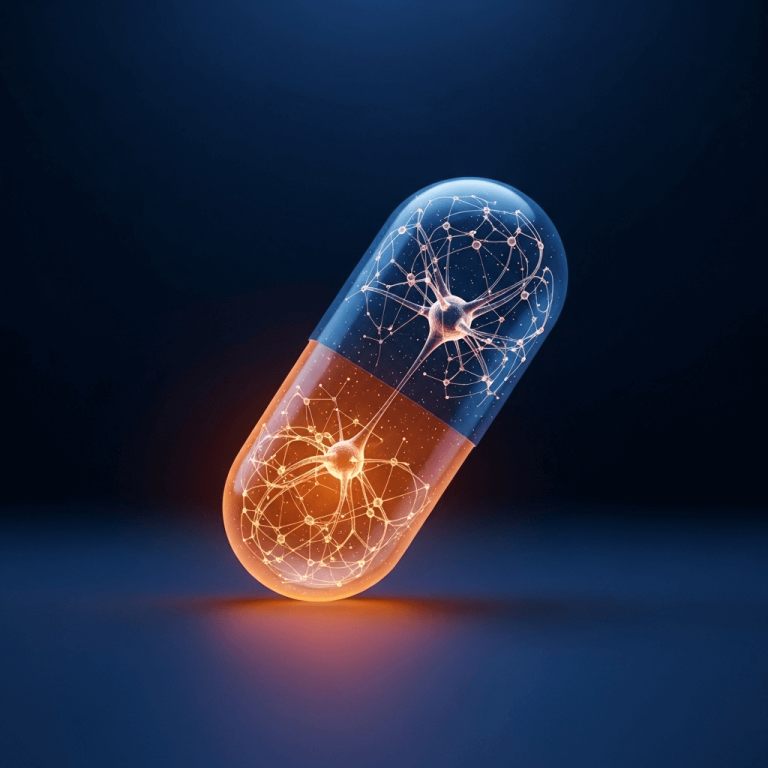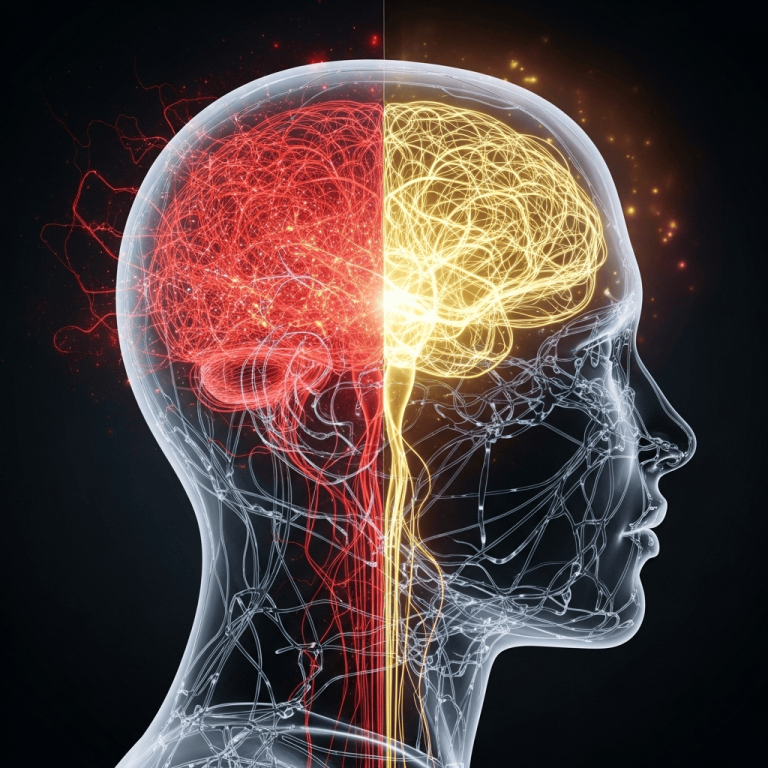The Hidden Truth in Your Antiperspirant. Are You Blocking Health by Blocking Sweat?
Every morning, millions of us perform the same ritual. A shower, brushing our teeth, and… reaching for an antiperspirant. It’s our silent ally in the quest for comfort and confidence. But have you ever stopped to think about what you’re actually applying under your arms? And is the star ingredient—aluminum—a quiet enemy of your longevity?
At LiveLongerNow.org, we believe knowledge is the most powerful tool for a healthy life. It’s time to separate scientific fact from persistent myths.
How Does Aluminum Work? Your Personal Skin Plug
Let’s start with the basics. An antiperspirant is not the same as a deodorant. A deodorant masks odor (usually with alcohol or fragrances), while an antiperspirant PHYSICALLY blocks sweat.
How? Aluminum salts, such as aluminum chlorohydrate, react with the electrolytes in your sweat to form a temporary gel plug in the sweat duct. It’s simple and incredibly effective. But is it safe?
Aluminum on Trial: Breast Cancer and Alzheimer’s
These are the two most serious accusations leveled against aluminum salts. Over the years, a lot of fear has grown around them. Let’s see what the science says.
- Breast Cancer: The theory suggests that aluminum absorbed through the skin near the breasts can have estrogen-like effects, potentially promoting the growth of cancer cells.
- The Scientific Verdict: Despite numerous studies, no conclusive evidence has been found to establish a direct link between the use of aluminum-based antiperspirants and breast cancer. The American Cancer Society and the National Cancer Institute (NCI) emphasize there is currently no cause for concern. Research shows that a negligible amount of aluminum (about 0.012%) is absorbed through intact skin.
- Alzheimer’s Disease: This hypothesis originated in the 1960s when elevated levels of aluminum were discovered in the brains of Alzheimer’s patients.
- The Scientific Verdict: Today, this link is largely dismissed by the scientific community. It has not been proven that aluminum causes the disease, only that it may accumulate in already damaged tissues. Furthermore, our daily exposure to aluminum from food and water is many times higher than what we get from antiperspirants.
Deepen Your Knowledge:
Why Do We Have Underarm Hair? The Wisdom of Evolution
Before we explore alternatives, let’s consider why nature gave us hair there in the first place. It serves two key functions:
- Friction Reduction: It protects the delicate skin from chafing during arm movement.
- Pheromone Dispersal: Hair is an excellent medium for volatile chemical compounds (pheromones) that play a subtle role in social communication and mate selection.
So, should you shave it? From a biological health perspective, it doesn’t really matter. Shaving is primarily an aesthetic and cultural choice. It might slightly reduce the surface area for odor-causing bacteria, but it can also lead to micro-abrasions, potentially increasing the absorption of substances from cosmetics.
Life Before Antiperspirants & Healthy Modern Alternatives
How did people manage sweat before sticks and sprays filled store shelves? They used perfumes, essential oils, frequent bathing, and powders made from starch or baking soda. Special pads called “dress shields” were also sewn into clothing.
Today, we have many more options:
- Natural Deodorants: Based on baking soda, magnesium, essential oils (like tea tree), or clays. They don’t block sweat, but they neutralize odor.
- Potassium Alum (Crystal Deodorants): This is a natural mineral salt. While it’s also a form of aluminum, its molecules are much larger and don’t penetrate the skin. It works as an effective antibacterial.
- Acid Toners (AHA/BHA): A recent life-hack! Applying a glycolic acid toner to the underarms lowers the skin’s pH, creating an environment where odor-causing bacteria can’t thrive.
Conclusion: Does Your Choice Really Matter?
While science has largely exonerated aluminum antiperspirants, the final decision is yours. Making conscious choices about what you put on and in your body is a key component of a longevity-focused lifestyle.
The truth is, a single factor rarely determines our overall health. It is the sum of all your habits—your diet, sleep, stress levels, relationships, and toxin exposure—that shapes your future and your rate of aging.
Do you want to understand how your unique daily choices are impacting your biological age? Where are your greatest opportunities for improving your healthspan?
We invite you to visit livelongernow.org. Complete our comprehensive assessment, and you’ll receive a personalized longevity report that will serve as your roadmap to a healthier, longer future. Start your journey today!







